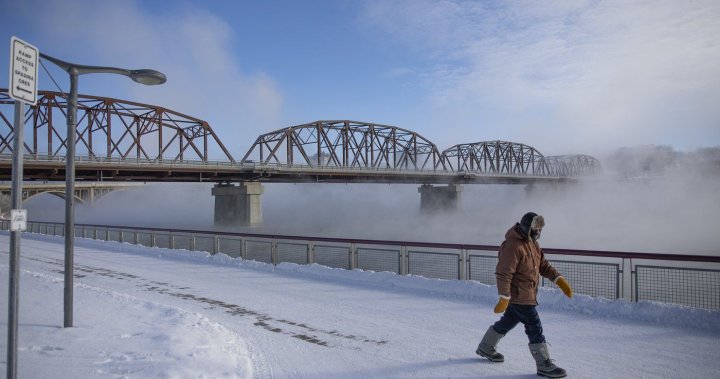The province of Saskatchewan, Canada, experienced a deep freeze in the last week of January 2025, with temperatures plummeting to a bone-chilling -36 degrees Celsius. The wind chill exacerbated the situation, making it feel like -50 degrees Celsius in many areas. This frigid spell, the coldest of the winter season thus far, prompted Environment Canada to issue extreme cold warnings across the province throughout the weekend and into Monday evening. The warnings advised residents to limit their time outdoors due to the significant risk of frostbite and hypothermia. Furthermore, pet owners were reminded that if conditions are too cold for humans to endure, they are also too cold for animals. The extreme cold is expected to relent by Tuesday, with forecasts predicting a significant warm-up.
The extreme cold brought a surge in calls for heating and plumbing services. Centennial Plumbing, Heating and Electrical reported over 100 heat-related calls over the weekend. The constant cycling of furnaces, turning on and off in response to the fluctuating temperatures, puts stress on components and can lead to breakdowns. Michael Shaw, an operator leader at the company, advised residents experiencing heating issues to first check their thermostats for dead batteries, followed by inspecting the furnace filter. If these simple checks don’t resolve the problem, he recommended ensuring outside vents are clear of obstructions. If the issue persists, the next step is to contact a professional service provider.
Beyond the potential for furnace malfunctions, the extreme cold also presented risks related to exterior plumbing and structures. SGI Canada cautioned residents about the possibility of frozen pipes bursting and ice dams forming on roofs. Ice dams occur when snow melts on a warm roof and then refreezes along the eaves, creating a barrier that prevents further melting snow from draining. This can lead to water backup and potential damage to the roof and interior of the house. SGI recommended using a roof rake to carefully remove ice dams. For frozen pipes, they advised a slow thawing process, possibly including shutting off the main water supply to prevent flooding in case of a rupture.
The extreme cold also wreaked havoc on vehicles across the province. Astro Towing experienced an overwhelming demand for battery boosts, receiving over 400 calls on Monday alone. With a constant backlog of 60 to 70 calls, wait times for assistance stretched to three or four hours. Rae Purdy, the office manager at Astro Towing, urged residents to ensure their block heaters were functioning correctly and plugged into a working outlet, emphasizing that sometimes a tripped breaker can go unnoticed. The combination of frigid temperatures and increased demand placed a significant strain on towing services.
The City of Saskatoon also felt the impact of the extreme cold, reporting 16 water main breaks in January. This number is already more than half of the 28 breaks recorded throughout January of the previous year. The city attributed the breaks to the significant temperature fluctuations and the depth of frost penetration into the ground, which can cause shifting and stress on underground pipes. The extreme cold highlighted the vulnerability of infrastructure to extreme weather events.
Despite the challenges posed by the extreme cold snap, relief is in sight. Weather forecasts predict a significant warm-up beginning Tuesday, with temperatures expected to rise back into the single digits. This respite from the frigid conditions will provide much-needed relief for residents, businesses, and infrastructure across Saskatchewan. The roller-coaster ride of winter temperatures, however, isn’t necessarily over for the season, and residents should remain prepared for potential future cold spells.

